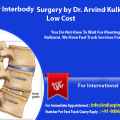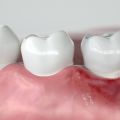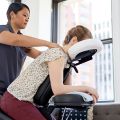Top 10 Ways to Relieve Hip and Knee Pain

With the arrival of spring comes seasonal sporting activities like volleyball, football, and Easter shopping (yes, this is a sport!), all of which lead to increased physical activity. Of course, staying active is beneficial; but, these activities may exacerbate or aggravate an existing knee or hip injury, which is undesirable.
Hip and knee pain can be caused by anything, including ligament tears or muscle strains from direct impact, as well as osteoarthritis or other disorders that cause joint wear and tear over time. For all of those problems, you should consult with your doctor to have the chance for a normal, active, and healthy life in the future.
Common symptoms of knee issues include:
- swelling - increased pain when the knee is bent or extended
- inability to put your full weight on the knee
- limited range of motion
- buckling of the knee
Common symptoms of hip problems include:
- joint pain
- swelling and tenderness
- difficulty sleeping on your hip
- stiffness of the hip joint after sitting for long periods
1. Rest
Intense exercise can exacerbate knee or hip pain, so rest for a day or two to relieve pain and inflammation.
2. But don’t rest too much!
Inactivity over extended periods weakens the muscles that support the hip and knee joints. Exercise can boost the health of cartilage tissue and strengthen the muscles that support the joint. Rest while the pain is severe, but then resume moderate activity and strength training exercises to alleviate discomfort and prevent further injury.
3. Ice it
Every few hours, ice your knee or hip for 15 to 20 minutes to relieve pain and swelling. Continue this for a few days, or until the soreness subsides.
4. Compress
Wrapping your knee joint with an elastic bandage or straps will assist reduce swelling and provide extra support.
5. Elevate
Keep your knee elevated by placing a pillow or cushion underneath it while sitting or lying down to reduce swelling.
6. Stretch and Strengthen
Perform physical therapy exercises that stretch and strengthen the knee and hip joints to increase the range of motion, strengthen supporting muscles, and reduce inflammation and pain. Here are some effective knee and hip strengthening exercises.
7. Weight Management
Carrying a lot of extra weight not only causes inflammation in your body but also places a lot of strain and pressure on your joints. Losing weight can considerably lessen joint pain, especially in the knees.
8. Medication
Over-the-counter anti-inflammatory medications like ibuprofen and naproxen can help relieve mild to moderate joint discomfort.
9. Injections
In some circumstances, corticosteroid or hyaluronic acid injections straight into your joints can help reduce inflammation and pain.
10. Surgery
If none of the aforementioned therapies are effective, surgery may be necessary to relieve your knee or hip discomfort. Depending on the severity of your joint injury, there are numerous surgical procedures available, including:
- Arthroscopic surgery – A minimally invasive procedure to repair joint issues.
- Partial knee or hip replacement surgery – The badly damaged sections of the joint are replaced with plastic or metal components.
- Total knee or hip replacement surgery – The entire joint is replaced with an artificial joint composed of high-quality polymers and metal alloys.
Prevention Tips
- Gradually raise your training regimen to the desired intensity level.
- Stretch your legs and hips before and after engaging in physical activities.
- Wear well-fitting shoes that provide ample support.
- If you are overweight, lose some weight to reduce the load on all of your joints.
- If you experience pain in your knee or hip while exercising, stop and use a cold pack as needed.
Other articles and publications:
Articles and publications of other companies:
 Travel to India for Health Sake to get Anterior Lumbar Interbody Fusion (ALIF) by Dr Arvind Kulkarni
Travel to India for Health Sake to get Anterior Lumbar Interbody Fusion (ALIF) by Dr Arvind Kulkarni
- +1 (646) 270-9836
- Long Island City
- grantny.com












